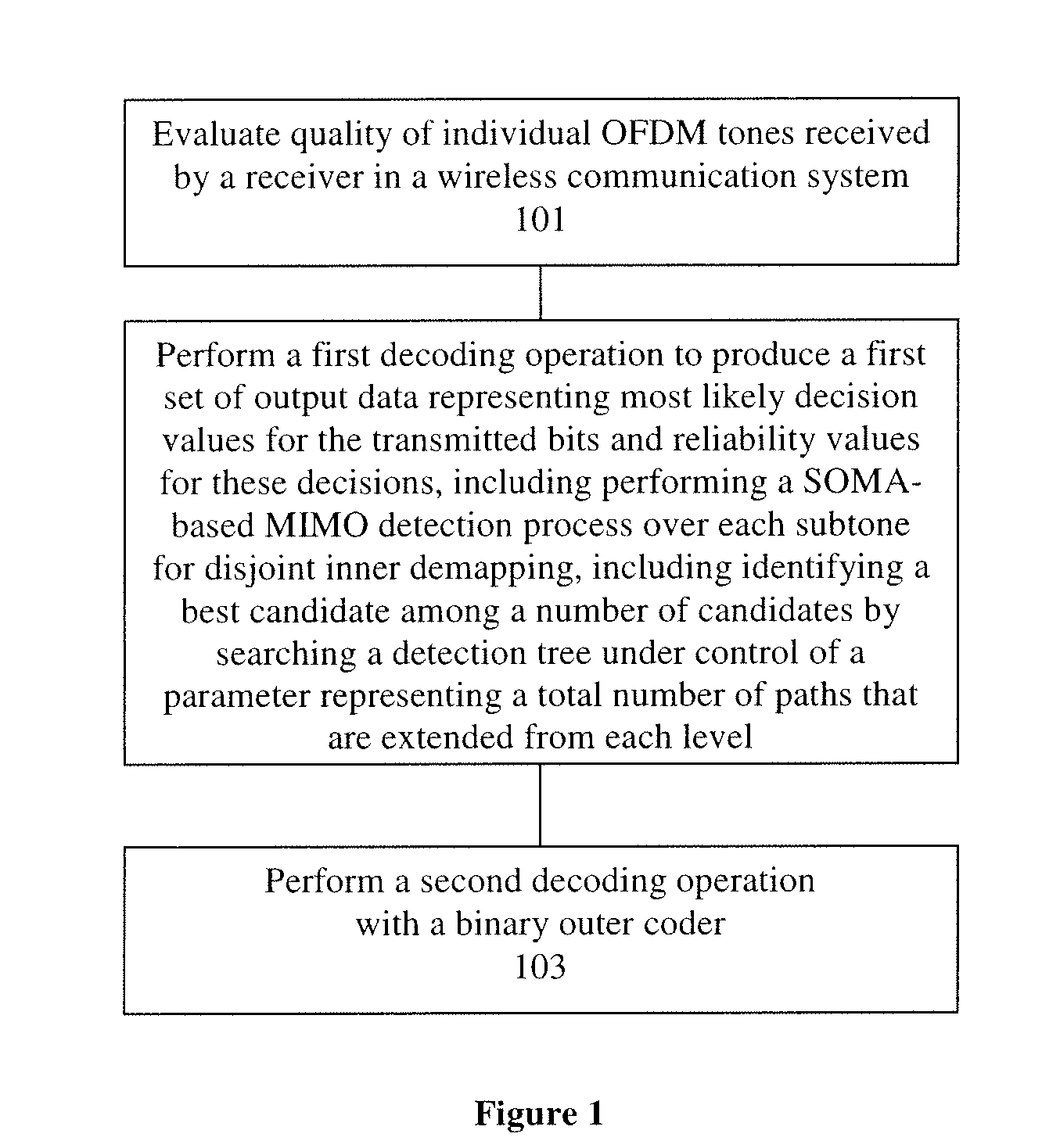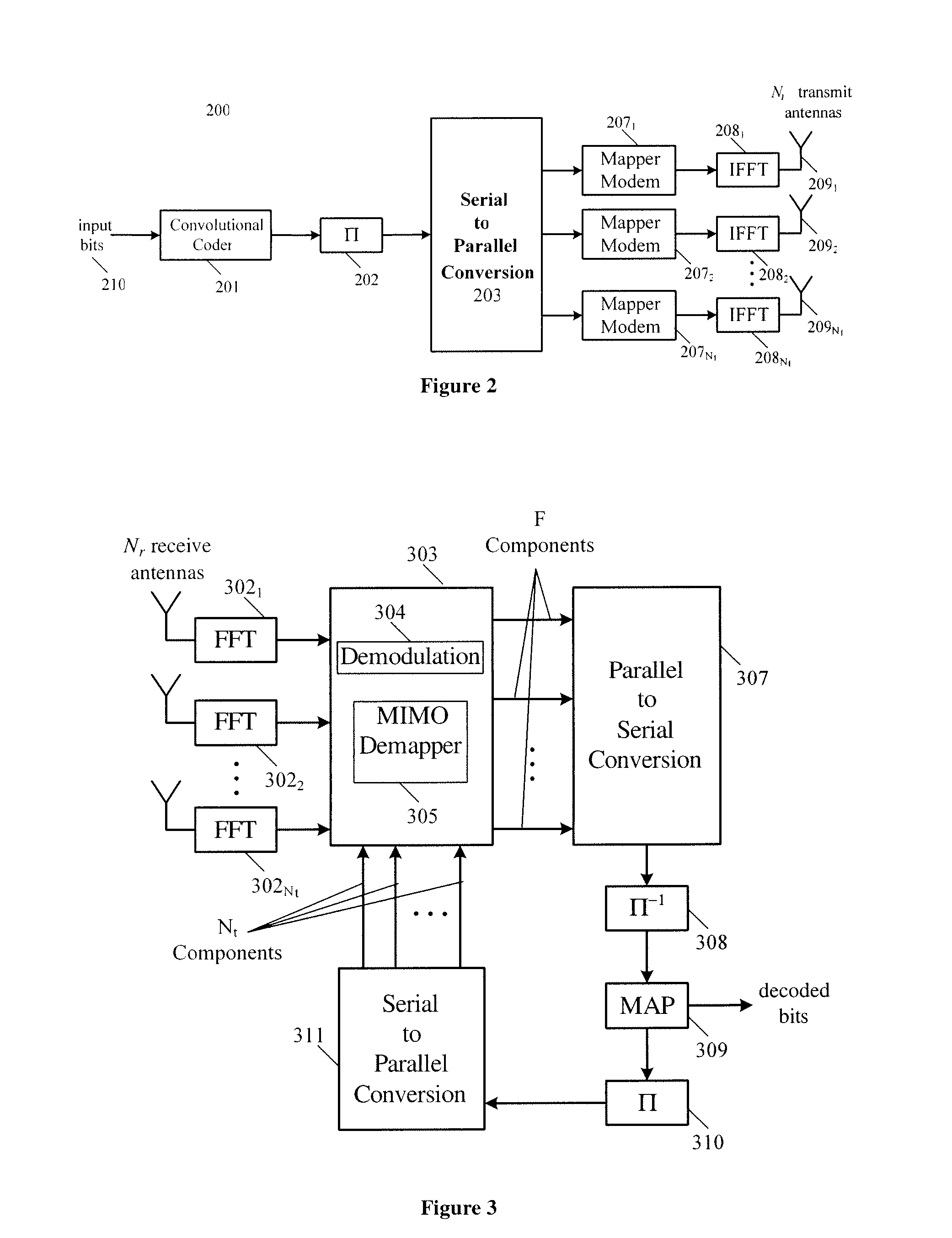Adaptive soft output m-algorithm receiver structures
a receiver structure and soft output technology, applied in the field of wireless communication, can solve the problems of not being known (and thus not being able to adjust for), restricting the number of multiplexing gains (and thus the spectral efficiency and throughput) that can be provided
- Summary
- Abstract
- Description
- Claims
- Application Information
AI Technical Summary
Benefits of technology
Problems solved by technology
Method used
Image
Examples
Embodiment Construction
[0026]Embodiments of the present invention relate, in general, to adaptive receiver structures for receiving digital information over wireless systems, with multiple transmit antennas and multiple receive antennas. Embodiments of the present invention deal with flexible and efficient MIMO joint demappers based on improved versions of the soft output M-algorithm.
[0027]Such adaptive receiver structures may be used in wireless communication environments in which a mobile receives (by use of one or several antennas) a signal that is sent over multiple transmit antennas, and where the transmit antennas may be distributed over multiple base stations (i.e., they are not collocated). In one such system, the transmit antennas are collocated at the same base station.
[0028]Embodiments of the present invention include reduced complexity receivers for systems that, for example, exploit intelligent wideband transmission of the information bearing signal over the multiple independently fading path...
PUM
 Login to View More
Login to View More Abstract
Description
Claims
Application Information
 Login to View More
Login to View More - R&D
- Intellectual Property
- Life Sciences
- Materials
- Tech Scout
- Unparalleled Data Quality
- Higher Quality Content
- 60% Fewer Hallucinations
Browse by: Latest US Patents, China's latest patents, Technical Efficacy Thesaurus, Application Domain, Technology Topic, Popular Technical Reports.
© 2025 PatSnap. All rights reserved.Legal|Privacy policy|Modern Slavery Act Transparency Statement|Sitemap|About US| Contact US: help@patsnap.com



